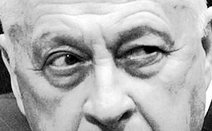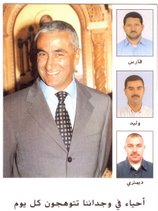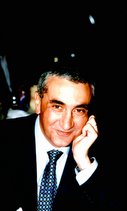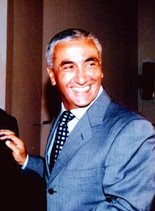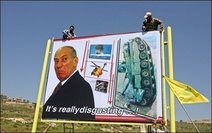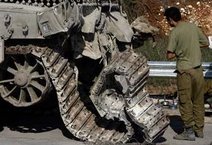
More evidence emerges that H1N1 was engineered in "Jurassic Park" bio-labs
Informed sources have revealed to WMR that the H1N1 virus, which the World Health Organization (WHO) has warned could become a global pandemic, was reverse engineered from genetic material obtained from the remains of victims of the deadly 1918 "Spanish flu" influenza pandemic that killed 50 million people worldwide.
WMR has obtained information from biological researchers that the 1918 Spanish flu genetic sequences were "manipulated" in order to effect transmission capability. The current H1N1 virus, called "swine flu," is reportedly a combination of two forms of human flu, two forms of swine flu (North American and Eurasian), and avian or bird flu. There are now reports of species hopping from humans to pigs in Canada.
The scientific name for the current H1N1 virus that was manipulated is "Influenza A virus (strain A/Brevig Mission/1/1918 H1N1)." It is called Brevig Mission because, as WMR previously reported, U.S. Army biological warfare specialists recovered the genetic material from the fairly intact corpse of an Inuit woman who died from the 1981 flu in Brevig Mission, Alaska. WMR has learned that work on manipulation of the Brevig Mission flu strain began in 1997.
Two bio-safety laboratories have been associated with the genetic reverse engineering of not only A-H1N1, the current "swine flu" strain, but also the deadly Ebola virus. They are the University of Wisconsin-Madison and the National Microbiology Laboratory in Winnipeg, Canada. The Associated Press reported on September 20, 2007, that the Madison laboratory was cited for safety violations: "University of Wisconsin-Madison research on the deadly Ebola virus was conducted for a year in a less-secure laboratory than required, until the National Institutes of Health alerted the school to the problem. The deadly virus itself was never present in the laboratory, said Jan Klein, UW-Madison biological safety officer. Instead, DNA copies of the virus were being studied to better understand one of the world's most dangerous pathogens."
The report also stated that the Madison research facility was involved with combining "materials": "Klein said no one was ever at risk, though an infectious virus could have been produced if the research material had been combined with other components. But that was not part of any planned experiment and would not be done by accident,' she said."
The National Institutes of Health (NIH) reportedly shut down the Ebola research at Madison but it was reportedly moved to a Level 4 Bio-Safety Laboratory at the National Microbiology Laboratory at the Canadian Science Center for Human and Animal Health in Winnipeg, Manitoba. In 2007, macaque monkeys were infected with the 1981 flu virus at the Canadian laboratory by some of the same researchers who were involved in the risky Ebola research in Madison.
The research in Madison on Ebola had been conducted in a Bio Safety Level 2 laboratory when it should have been conducted in a Bio Safety Level 4 laboratory, the most stringent for pathogens like Ebola and H1N1. At the time of the safety violations, Madison has less stringent Level 3 labs but no Level 4 labs. In early 2008, Madison again conducted work on Ebola, but in a Level 4 lab.
Science Daily reported the following from Madison on October 7, 2004: "Using a gene resurrected from the virus that caused the 1918 Spanish influenza pandemic, recorded history's most lethal outbreak of infectious disease, scientists have found that a single gene may have been responsible for the devastating virulence of the virus."
The Winnipeg laboratory figures into the November 15, 2001 disappearance of noted Harvard University virologist Dr. Don C. Wiley in Memphis, Tennessee after his attendance at a banquet honoring his service as a scientific advisory board member of St. Jude's Hospital. Wiley's body was found one month later in the Mississippi River in Vidalia, Louisiana. The Shelby County medical examiner ruled Wiley's death a "suicide" from jumping into the Mississippi River from the west bound lane of the I-40 Hernando de Soto bridge. Wiley was heading back to his father's residence in Millington, northeast of Memphis at the time of his disappearance.
This editor reported on the Wiley death extensively at the time. And the Canadian facility became involved in the investigation. From "Mystery in Memphis," published in "Abuse Your Illusions, 2003, edited by Russ Kick: "While the Memphis Police and the FBI continued to handle the Wiley case as just another distraught "jumper" hurling himself 135 feet into the Mississippi River, other law enforcement agencies were not as sanguine.
On November30 [2001], [Memphis Police Sergeant Robert 'Bubba' Shemwell received a call from Detective Paul McKemmie of the National Security Investigation Unit of the Royal Canadian Mounted Police (RCMP) in Ottawa. McKemmie advised Shemwell that his unit was responsible for protecting scientists with Level-3 and Level-4 clearance at the Canadian Science Center for Human and Animal Health in Winnipeg, Manitoba.
The Canadian center houses the National Microbiology Laboratory, where scientists deal with the most dangerous and contagious human and animal pathogens and diseases, which are categorized as Level-4. These include hantavirus, hepatitis, influenza, and hemorrhagic fevers such as the Ebola virus, Marburg virus, and Lassa Fever. In another highly-protected laboratory, scientists work with Level-3 agents, which include bacteria such as anthrax that, although not contagious, can be transmitted through the air and can cause death or serious illness. The center's tight security is overseen by the RCMP and Canadian Security and Intelligence Service.
McKemmie told Shemwell that someone had posted an email suggesting that Dr. Wiley was not the target for a kidnapping to obtain anthrax but that a scientist working at the Winnipeg laboratory was a more likely target for a kidnapping by bioterrorists.
Nevertheless, the RCMP wanted to know if Memphis had any information that would indicate that Wiley was the target for an abduction by terrorists. Shockingly, Shemwell fed te RCMP the same line he was feeding the Wiley family and the media: There was no evidence to support the theory that Wiley's disappearance was the result of foul play and that suggestions to the contrary were being mentioned only in the media.
Obviously, not buying Shemwell's line, the Mountie indicated that the RCMP, like the FBI, also would continue to monitor Wiley's disappearance and check out any leads from Canada."
The idea that Wiley's body could have been in the fast-raging Mississippi for a month seems fanciful. When his body was discovered in Louisiana, Wiley's clothing was intact. Recovered from Wiley's clothing were his watch, wedding band, belt, wallet, and even a piece of hard candy that managed not have dissolved after an entire month in water.
Wiley co-wrote a paper on the structures of H5 avian flu and H9 swine flu that was published in the Journal of the National Academy of Sciences in September 18, 2001, just some two months before he went missing in Memphis. However, Wiley's expertise on the 1918 influenza was longstanding. In 1981, Wiley co-wrote a paper, titled "X-ray structures of H5 avian and H9 swine influenza virus hemagglutinins bound to avian and human receptor analogs," that defined the crystal structure of the 1918 influenza virus, a step that made it easier to conduct "forensic" analysis on the origin of precursor viruses and their naturally-occurring or man-made genetic off-shoots.
Although virology, not bacteriology, was Wiley's area of expertise, it was revealed during my investigation of Wiley's death that he had become quite concerned about the mailing of anthrax through the postal system. A week before his disappearance, Wiley attended a session on "Bioethics and Research" at a meeting of the Howard Hughes Medical Institute in Chevy Chase, Maryland. At the time of the conference, four people had already been killed from being exposed to anthrax-laden letters sent through the mail. It was later discovered that the anthrax originated from the U.S. Army Medical Research Institute for Infectious Diseases at Fort Detrick, Maryland.
Wiley had also received a letter from a failed PhD student at University College in Dublin, Ireland that sought to warn him about the origins of anthrax. In October 2001, a series of "white powder" samples were discovered at University College. Irish Army specialists transferred all the samples to Britain's Porton Down bio-warfare facility, the UK's equivalent of Fort Detrick.
Based on Dr. Wiley's expertise in tracking down the origins of viruses and, with his specialty in crystallization of samples, bacteria like anthrax, as well, it is clear that whoever is benefiting from the outbreak of a A-H1N1 flu that has been resurrected and genetically "manipulated" in a "Jurassic Park" laboratory had a very good reason to murder Dr. Wiley and make it appear to be a suicide.



